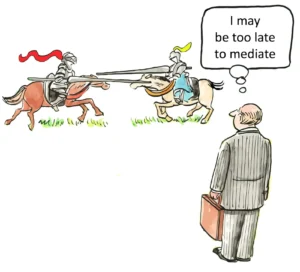Department of Government Efficiency: Legal Framework and Constitutional Challenges
The establishment of the Department of Government Efficiency represents one of the most significant administrative reforms in recent American governance, bringing with it a complex web of legal questions and constitutional challenges that merit careful examination. This novel governmental entity, designed to streamline federal operations and reduce bureaucratic waste, operates outside traditional agency structures in ways that test the boundaries of executive authority. The legal framework supporting this department remains contested terrain, with ongoing litigation challenging its constitutional legitimacy on multiple fronts, from separation of powers concerns to questions about congressional appropriation authority.
The department’s creation by executive order rather than congressional legislation has sparked intense debate among constitutional scholars, government officials, and the judiciary about the proper limits of presidential power in restructuring the administrative state. As federal courts grapple with these questions, their decisions will likely shape not only the future of this specific department but also broader principles of administrative law and constitutional governance for generations to come. The tension between executive efficiency goals and constitutional constraints exemplifies the enduring American struggle to balance effective governance with limited government principles.
Historical Context and Formation
The concept of government efficiency reform has deep roots in American administrative history, with various presidents attempting to streamline bureaucracy through executive reorganization. From the Brownlow Committee under Franklin Roosevelt to the Grace Commission under Ronald Reagan, efforts to reduce government waste have been a recurring feature of executive branch initiatives. These historical precedents provide important context for understanding the current department’s formation, though none approached the scope and authority granted to the present entity.
The Department of Government Efficiency emerged from campaign promises to “drain the swamp” and reduce the size of government through business-oriented management principles. Unlike previous reform efforts that operated within existing departmental structures or through temporary commissions, this department was established with ongoing authority to identify inefficiencies, recommend eliminations of programs and positions, and in some cases, directly implement changes across the federal government. This expansive mandate distinguishes it from historical analogs and raises novel legal questions about executive reorganization authority.
The department’s leadership structure, featuring private sector executives serving without traditional confirmation processes, further differentiates it from historical precedents. This hybrid public-private governance model, while innovative from a management perspective, creates additional legal complexities regarding appointments, ethics requirements, and accountability mechanisms that courts are now being asked to address. The historical novelty of this approach has left courts with limited precedent to guide their analysis of the constitutional questions at stake.
Separation of Powers Concerns
The most fundamental constitutional challenge facing the Department of Government Efficiency involves separation of powers principles that lie at the heart of American constitutional design. By empowering an executive branch entity to make determinations about program elimination and resource allocation traditionally reserved for Congress, critics argue that the department encroaches upon legislative authority in ways that violate core constitutional boundaries. This concern has formed the basis for multiple legal challenges currently moving through federal courts.
Article I of the Constitution explicitly grants Congress the power of the purse, including authority to appropriate funds and determine how they should be spent. When the department directs agencies to reallocate resources, eliminate programs, or reduce staffing without specific congressional authorization, it potentially undermines this fundamental legislative prerogative. Federal judges have expressed varying degrees of concern about this issue, with some issuing preliminary injunctions against certain department directives pending full consideration of their constitutionality.
The Supreme Court’s jurisprudence on separation of powers provides some guidance for evaluating these challenges, though the unique nature of the department creates novel questions. In cases like Youngstown Sheet & Tube Co. v. Sawyer, the Court established a framework for analyzing executive action based on whether it is supported by express or implied congressional authorization, operates in a zone of silence, or contradicts congressional will. Applying this framework to the department’s activities yields complex results that vary depending on the specific action being challenged, with some directives potentially falling into different categories than others.
Administrative Procedure Act Compliance
Beyond constitutional questions, the Department of Government Efficiency faces significant legal challenges regarding its compliance with the Administrative Procedure Act (APA), the foundational statute governing agency action and judicial review. Critics argue that the department has bypassed APA requirements for notice-and-comment rulemaking, reasoned decision-making, and procedural regularity in ways that render many of its directives legally vulnerable regardless of their substantive merits.
The APA typically requires agencies to provide public notice of proposed rules, solicit and consider public comments, and offer reasoned explanations for final decisions that demonstrate consideration of relevant factors and alternatives. When the department issues directives to other agencies without following these procedures, it creates potential APA violations that courts have begun to scrutinize. Several federal judges have issued rulings finding that specific department actions likely violated APA requirements, though these decisions remain subject to appeal.
Defenders of the department argue that its directives constitute internal executive branch management rather than substantive rulemaking subject to APA requirements. This distinction between management and rulemaking represents a contested legal boundary that courts must navigate. The department’s hybrid status—neither a traditional agency nor merely an advisory body—complicates this analysis, as does the substantive impact of its directives on government operations and public services. How courts ultimately resolve these APA questions will significantly shape the department’s operational capacity going forward.
Appointment and Removal Authority
The staffing structure of the Department of Government Efficiency raises distinct legal questions regarding presidential appointment power and constitutional requirements for federal officers. By utilizing private sector executives serving without Senate confirmation in leadership roles with significant governmental authority, the department tests constitutional boundaries regarding who may exercise federal power and through what appointment mechanisms.
The Appointments Clause of the Constitution requires that principal officers of the United States be appointed by the President with Senate confirmation, while inferior officers may be appointed without such confirmation only if Congress explicitly authorizes alternative appointment methods. Courts must determine whether department leaders qualify as principal officers, inferior officers, or mere employees—a classification that depends on the nature and scope of their authority. If deemed principal officers, their appointment without Senate confirmation would raise serious constitutional problems.
The removal protections (or lack thereof) for department personnel create additional legal questions. The Supreme Court has recognized that certain officers, particularly those with adjudicatory or independent functions, may be protected from at-will presidential removal. The department’s unique structure, with leaders serving at the pleasure of the President while exercising authority over career civil servants with statutory job protections, creates potential conflicts that courts must resolve. These removal questions intersect with broader debates about the unitary executive theory and presidential control over administration that have divided courts and scholars for decades.
Congressional Appropriation Authority
The Department of Government Efficiency’s directives regarding resource allocation and program funding implicate Congress’s appropriation power, raising questions about whether the executive branch can effectively redirect funds without specific legislative authorization. The Constitution’s Appropriations Clause requires that “No Money shall be drawn from the Treasury, but in Consequence of Appropriations made by Law,” establishing a fundamental legislative check on executive spending.
When the department instructs agencies to reduce or eliminate funding for specific programs, it potentially conflicts with congressional appropriations that allocated those funds for particular purposes. The Anti-Deficiency Act further prohibits federal officials from spending funds in excess of appropriations or in advance of appropriations, while the Impoundment Control Act restricts the executive’s ability to withhold funds appropriated by Congress. These statutory constraints, rooted in constitutional principles, create significant legal obstacles for department directives that effectively reprioritize spending.
Courts have historically shown deference to Congress’s appropriation authority, recognizing it as a core legislative function. Recent cases involving executive attempts to redirect appropriated funds for border wall construction and other priorities suggest that courts remain willing to enforce these constitutional boundaries. The department’s defenders argue that its directives merely improve efficiency within existing appropriations rather than redirecting funds, but this distinction has proven difficult to maintain in practice given the substantive impact of many efficiency measures on program operations and priorities.
Due Process and Property Interests
The department’s workforce reduction initiatives raise important questions about due process protections for federal employees and contractors who may lose positions or contracts through efficiency-based terminations. The Fifth Amendment prohibits the government from depriving individuals of property without due process of law, and courts have long recognized that public employment and certain government contracts can constitute property interests protected by this guarantee.
Federal civil service laws provide procedural protections for career employees, including notice and opportunity to respond before adverse employment actions. When the Department of Government Efficiency directs agencies to eliminate positions or reduce staffing without following these procedures, it potentially violates both statutory requirements and constitutional due process guarantees. Several class action lawsuits have been filed challenging department-directed workforce reductions on these grounds, with mixed results thus far in lower courts.
For government contractors, the legal analysis differs somewhat but raises similar concerns. Government contracts typically include termination provisions and other protections that cannot simply be ignored in the name of efficiency. Courts must determine whether department directives to cancel or modify contracts without following contractual procedures violate both contract law and constitutional principles. These cases highlight the tension between executive efficiency goals and legal protections for individual rights and interests that cannot simply be sacrificed for administrative convenience.
Transparency and Accountability Mechanisms
The Department of Government Efficiency has faced legal challenges regarding its compliance with various transparency laws designed to ensure government accountability, including the Freedom of Information Act (FOIA), Federal Advisory Committee Act (FACA), and Government in the Sunshine Act. These statutes collectively establish public access requirements that the department’s operations have sometimes appeared to circumvent.
FOIA requires federal agencies to disclose requested records unless they fall within specific exemptions, yet the department has frequently claimed that its internal deliberations and recommendations are exempt from disclosure. Courts must determine whether these exemption claims are valid or represent attempts to shield department operations from public scrutiny. Similarly, FACA imposes transparency requirements on advisory committees that include non-government members, potentially applying to the department’s use of private sector advisors in formulating efficiency recommendations.
The Federal Records Act requires agencies to preserve documents related to government business, while the Presidential Records Act establishes similar requirements for presidential records. The department’s use of non-governmental communication channels and temporary advisory positions has created questions about compliance with these record-keeping requirements. Several lawsuits have sought to compel proper record maintenance and disclosure, arguing that the department’s practices undermine essential accountability mechanisms that ensure executive branch transparency.
Federalism Implications
The Department of Government Efficiency’s directives sometimes affect federal programs that operate in partnership with state and local governments, raising important federalism questions about the executive branch’s authority to unilaterally modify these intergovernmental arrangements. Cooperative federalism programs in areas like Medicaid, environmental protection, and transportation typically involve complex funding formulas and shared responsibilities established by statute and implemented through formal agreements.
When the department directs federal agencies to modify these programs in ways that affect state interests without following established procedures for intergovernmental consultation, it potentially undermines federalism principles and statutory requirements for state involvement. Several states have filed lawsuits challenging department directives that affect joint federal-state programs, arguing that these unilateral changes violate both statutory requirements and constitutional federalism principles.
The Supreme Court’s federalism jurisprudence has increasingly emphasized the importance of clear statement rules and procedural protections for state interests in cooperative federalism arrangements. These precedents suggest that executive efficiency initiatives cannot simply override statutory protections for state involvement in joint programs, even when motivated by legitimate concerns about waste or inefficiency. How courts balance these federalism concerns against executive management prerogatives will significantly shape the department’s ability to address inefficiencies in intergovernmental programs.
Judicial Review Standards
Courts reviewing challenges to Department of Government Efficiency actions must determine the appropriate standard of review to apply, a question that implicates fundamental principles of administrative law and separation of powers. The traditional framework established in Chevron U.S.A., Inc. v. Natural Resources Defense Council, Inc. grants deference to agency interpretations of ambiguous statutes they administer, but the department’s unique status and cross-cutting authority complicate this analysis.
The Supreme Court’s recent decision overturning the Chevron doctrine has further complicated judicial review of department actions. Without Chevron deference, courts must independently interpret relevant statutes rather than deferring to executive branch interpretations. This shift potentially strengthens legal challenges to department directives that rely on expansive interpretations of executive reorganization authority or narrow readings of statutory constraints.
Beyond statutory interpretation questions, courts must also determine what level of scrutiny to apply to constitutional challenges involving the department. When fundamental separation of powers principles are at stake, courts have sometimes applied more stringent review than the rational basis test used for ordinary policy determinations. The outcome of pending litigation will likely depend significantly on how courts characterize the constitutional interests at stake and the corresponding level of scrutiny they apply to department actions that allegedly infringe those interests.
Comparative Institutional Perspectives
Understanding the legal challenges facing the Department of Government Efficiency benefits from comparative analysis of similar government reform initiatives in other democratic systems and previous American administrations. While the specific constitutional questions are uniquely American, the broader tension between executive efficiency goals and legal constraints on administrative power appears in various forms across democratic governments.
Parliamentary systems typically grant executives greater flexibility in administrative reorganization than the American separation of powers system, with prime ministers often able to restructure departments without legislative approval. However, even these systems maintain legal constraints on executive authority, particularly regarding civil service protections, transparency requirements, and judicial review of administrative action. The American department’s challenges reflect the particularly rigid constitutional separation of functions in the U.S. system rather than universal principles of administrative law.
Previous American administrations have attempted various government efficiency initiatives with mixed legal results. The Clinton administration’s “Reinventing Government” initiative, the Bush administration’s President’s Management Agenda, and the Obama administration’s efficiency efforts all faced legal constraints, though none attempted reforms as structurally significant as the current department. These historical examples suggest that successful government efficiency reforms typically work within existing legal frameworks rather than challenging fundamental constitutional boundaries, a lesson that current litigation may reinforce.
Potential Judicial Outcomes and Implications
As cases challenging the Department of Government Efficiency move through the federal courts, several potential outcomes emerge with significant implications for executive power and administrative governance. Courts might invalidate the department’s structure entirely as unconstitutional, preserve its advisory functions while restricting its directive authority, or uphold most aspects of its operations while imposing procedural requirements that ensure legal compliance.
A ruling invalidating the department’s basic structure would represent a significant limitation on presidential reorganization authority, establishing that major administrative reforms require congressional legislation rather than executive order. Such a decision would reinforce Congress’s primary role in designing the administrative state while limiting presidential management prerogatives. Conversely, a ruling fully upholding the department would expand executive reorganization power in ways that could fundamentally alter the balance between presidential administration and congressional design of agencies.
The most likely outcome involves courts taking a middle path that preserves some department functions while imposing procedural and substantive limitations that address the most serious legal concerns. This approach might allow the department to continue identifying inefficiencies and recommending changes while requiring congressional approval for major structural reforms or program eliminations. Such a compromise would maintain the constitutional separation of powers while still permitting meaningful executive branch efficiency initiatives within established legal boundaries.
Conclusion
The Department of Government Efficiency represents a bold administrative experiment that tests the boundaries of executive authority in pursuit of legitimate governance goals. The legal challenges it faces reflect enduring tensions in American constitutional design between efficiency in administration and legal constraints on power. How courts resolve these challenges will shape not only this specific department’s future but also broader principles of administrative law and constitutional governance.
The department’s defenders correctly note that government inefficiency and waste represent real problems deserving serious attention. Critics equally correctly observe that constitutional principles and statutory protections cannot simply be sacrificed in pursuit of administrative efficiency, however desirable. The ongoing litigation surrounding the department ultimately concerns finding the proper balance between these competing values within America’s constitutional framework.
As these cases progress through the judicial system, they will likely produce precedents that clarify the legal boundaries of executive reorganization authority for future administrations. Whatever the outcome, the Department of Government Efficiency controversy illustrates the continuing vitality of America’s constitutional system in adapting to new governance challenges while preserving fundamental principles of limited government, separation of powers, and the rule of law. The department’s ultimate legacy may lie less in its specific efficiency achievements than in the constitutional principles clarified through litigation challenging its authority.
Citations:
- Chronological List of Historical French Capitals
- Paris: Capital and Largest City of France
- Paris Facts: The Capital of France in History
- Paris: Definition, Map, Population, Facts, and History
- France: History, Maps, Flag, Population, Cities, and Capital
- French Language Courses for Kids and Teenagers in Paris
- European Union Capitals: Paris, France – Infoclip Video
- Paris, France – Intercultural City Profile
- Paris – Charming Capital of France – 8K HDR Travel Documentary




















